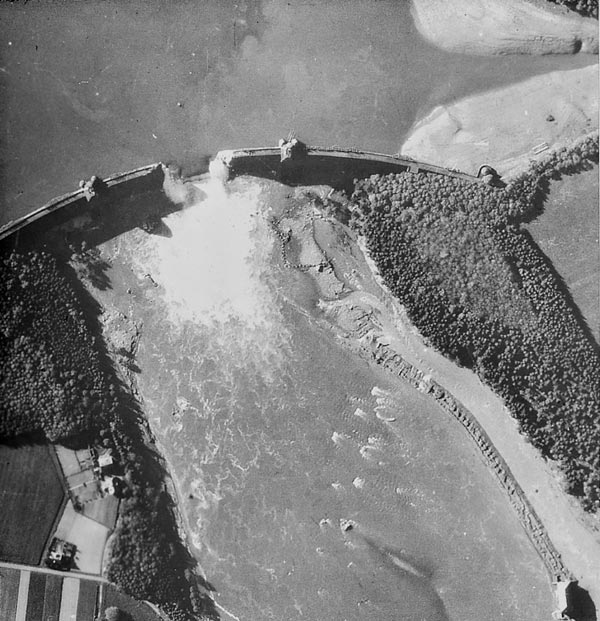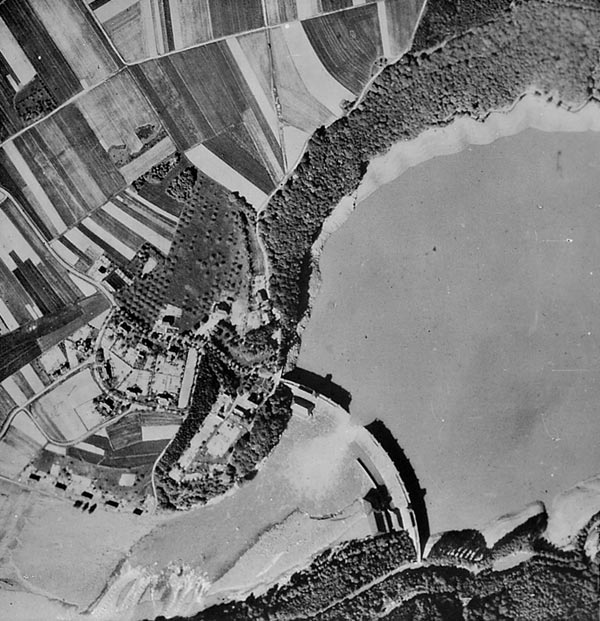Air Operations, Aleutians
8 28th Composite Bomb Group B-24s, 12 B-25s, and 343rd Fighter Group P-38s are sent to attack targets on Attu, but all the bombers are redirected against Kiska because of bad weather over Attu. Nevertheless, the P-38s are able to strafe ground targets on Attu, and a B-24 drops supplies to US Army ground troops.
Air Operations, Bismarcks
90th Heavy Bomb Group B-24s mount individual attacks against various coastal targets on New Britain and New Ireland.
[Air Operations, East Indies
In their unitís combat debut, 380th Heavy Bomb Group B-24s based at the airfield in Fenton, Australia attack the Kendari airfield on Celebes.
[Air Operations, Europe
Thousands of leaflets containing the names of 412 British ships claimed as sunk since June 1941 are dropped over northeast England.
BOMBER COMMANDDaylight Ops:
- 12 Venturas bomb Morlaix airfield and 5 Mitchells bomb the Caen airfield. 7 additional Mitchells can not locate their airfield target. There are no losses.
- One of the most daring raids of the war, Operation CHASTISE or the Dambusters Raid, is undertaken by the newly-formed No. 617 Squadron under the leadership of Wing Commander Guy Gibson. The mission is to breach several dams in Germany in order to slow down industrial production. Of the 4 that are targeted, 2 are breaches, the Möhne and the Eder. 19 aircraft are sent on the raid, but only 12 make it. 4 more of the planes are lost on the return journey. 53 crew members are killed and 3 are taken prisoner.
|
|
Flooding Caused by the Attack on the Dams |
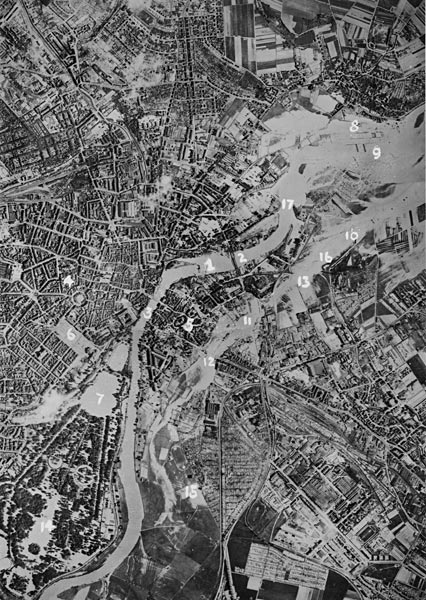 |
- 9 Mosquitos are sent to Berlin, Cologne, Düsseldorf and Münster. 54 aircraft lay mines off the Biscay ports and in the Frisians and there are 4 OTU sorties.
- 1 mine-laying Wellington is lost.
NORTHWESTERN EUROPE:
A total of 227 P-47 sorties are mounted over France, Belgium, and the Dutch coast by the 4th, 56th, and 78th Fighter Groups. During the afternoon sweeps, the 4th and 78th Fighter Groups are engaged by several FW-190 squadrons. 3 Luftwaffe fighters are downed, but 1 P-47 is lost. Also, an F-5 of the 13th Photographic Squadron fails to return from a sortie to Paris.
[Air Operations, New Guinea
90th Heavy Bomb Group B-24s mount individual attacks against various coastal targets.
[Aleutians
The Americans continue their attacks near Holtz Bay on Attu. The Japanese, having only 2,380 men opposed by 11,000 Americans, are in danger of being taken in the rear if the Americans succeed in breaking through from Massacre Bay. The Japanese pull back during the night to Chicagof Harbor to put up their final resistance.
[Battle of the Atlantic
- Over the next week 4 U-boat wolf packs attack 5 convoys but sink only 1 ship. 9 U-boats are sunk and 4 are damaged.
- The German submarine U-182 is sunk by the US destroyer MacKenzie (DD-614) west of the Madeira Islands.
| Class | Type IX D2 |
| CO | Kapitänleutnant Nicolai Clausen |
| Location | Atlantic, N of Tristan da Cunha |
| Cause | Depth charge |
| Casualties | 61 |
| Survivors | None |
The Dambusters Raid
During the night a specially trained RAF squadron, No 617, led by Wing Cmdr Guy Gibson, undertakes a precision attack on the dams on the Möhne and Eder Rivers in the Ruhr. They use specially designed bombs and unique techniques to attack targets which are reckoned to supply the majority of the electricity used in the Ruhr and a great deal of the water. A third target, the Sorpe dam, is not attacked. The operation, which is called Operation CHASTISE, has only been possible by training an elite squadron for this one mission and the losses, 8 of 19 planes, are too high to bear repetition. Both dams are damaged, causing many deaths and widespread flooding. The damage, however, is far slighter than has been hoped and both dams are fairly quickly repaired. The operation certainly does not prove that such precision attacks are either possible on a large scale, or likely to have the greatest effects.
The 'Dambusters' Raid |
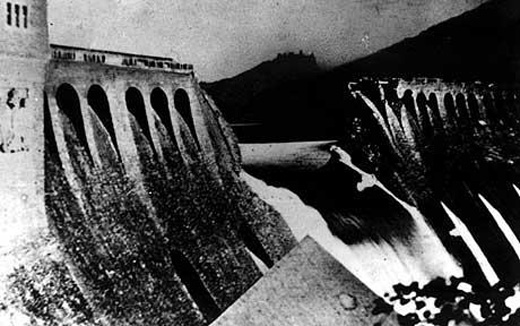 |
Eastern Front
Over the next 10 days the Germans mount a series of counterattacks in the Kuban area but these are fairly comfortably held by the Soviet forces.
Operation 'Gypsy Baron' begins which is intended to capture Soviet partisans.
SOUTHERN SECTORThe German 17th Army begins a series of counterattacks in the Kuban.
[North Africa
Gen Harold Alexander informs Churchill: 'Sir, it it my duty to report that the Tunisian campaign is over.'
[Occupied Holland
The Germans confiscate all wireless sets in Holland.
[Pacific
The US freighter William K. Vanderbilt is torpedoed by the Japanese submarine I-19 southwest of Suva, Fiji Islands and abandoned. Of the 41-man crew and the 16-man Armed Guard only 1 crewman is lost.
[Poland, Resistance
In the last act of the extermination of the Warsaw ghetto, the SS blow up the Tlomacki Synagogue. Only 8 buildings are left standing. Jürgen Stroop, the SS commander, boasts that since the rising began 14,000 Jews have been killed in the ghetto and a further 40,000 have been sent to Treblinka to be killed.(22,000 to concentration camps and 20,000 to labor camps?)
Ornganized resistance in the Warsaw Ghetto comes to an end. SS-Brigadeführer Jörgen Stroop, the SS commander during the rising, writes the following missive about the revolt in the battle diary: 'The resistance offered by the Jews and bandits could be broken only by the energetic, tireless deployment of storm patrols night and day. On April 23, 1943, the Reichsführer-SS, through the Higher SS and Police Führer for the East, in Kracow, issued the order that the Warsaw ghetto be combed out with maximum severity and ruthless determination. I therefore decided to carry out the total destruction of the Jewish quarter by burning down all residential blocks, including the blocks attached to the armament factories. One by one the factories were systematically cleared and then destroyed by fire. Almost always the Jews then emerged from their hiding places and bunkers. Not rarely, the Jews stayed in the burning houses until the head and fear of being burned to death caused them to jump from the upper floors after they had thrown mattresses and other upholstered objects from the burning houses to the street. With broken bones they would then try to crawl across the street into buildings which were not yet, or only partially, in flames. Often, too, Jews changed their hiding places during the night, by shifting into the ruins of buildings already burned out and taking refuge there until they were found by one of the shock troop units. Only as a result of the unceasing and untiring efforts of all forces did we succeed in capturing altogether 56,065 Jews.
End of Polish Resistance in Warsaw |
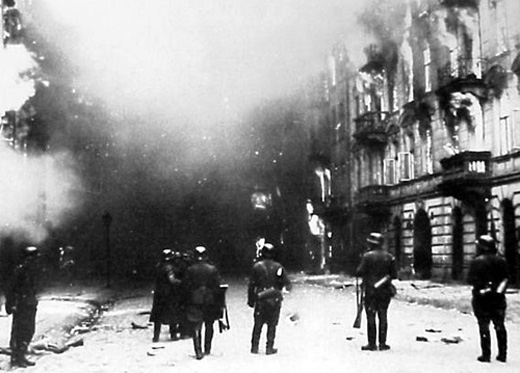 |
